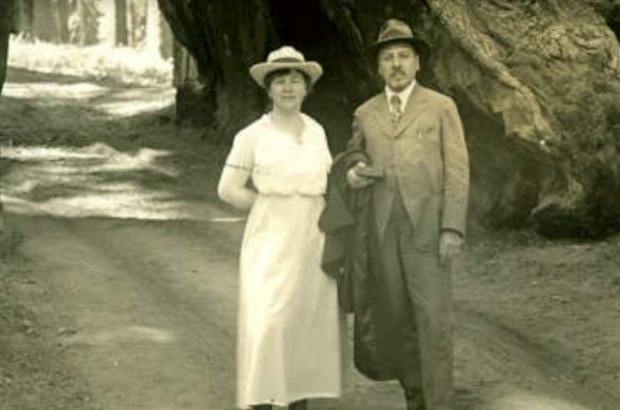- Daily & Weekly newsletters
- Buy & download The Bulletin
- Comment on our articles
An architectural adventure: What did Victor Horta learn from his time in the US?
While Victor Horta was in London in 1915 attending a conference on the future reconstruction of Belgium, a journalist quoted his negative comments about the Germans and Horta was unable to return to Belgium.
Meanwhile, his wife Julia had taken the opportunity of the London trip to organise lectures in her native Sweden on the wartime suffering of the Belgians, especially children. She turned out to be an electrifying speaker and the Belgian government sent her on a charitable mission to the US, which she accepted, after visiting the Belgian and French fronts for a personal view of trench warfare. She went on to give 500 lectures in the US, reaching 600,000 people and raising the equivalent of €11 million in today's money.
'My mind was loosened'
Arriving in New York, Horta was astonished by the skyscrapers, and in a symbolic gesture, the day after his arrival he shaved his beard, never growing it again. During the rest of the war years, the Hortas travelled across America, as he was invited to give a series of lectures on architecture in many American universities (eventually teaching at George Washington University) while Julia continued her charity work.
They visited Yellowstone and the Grand Canyon and the giant redwoods of California at Yosemite, as well as the Spanish missions which fascinate him. In Salt Lake City he was amazed by the acoustics of the Mormon hall in which he lectured and years later used it as an inspiration for the acoustics in the Salle Henry Le Boeuf of the Bozar building.
It is also during this time that Horta changed some of his fundamental ideas about architecture. "My mind was loosened. What I would have once opposed as being incompatible with the architect’s profession, I have understood since and, from a certain angle, see it even as a desirable example."
Standardisation was an accepted American concept in architecture which went against Horta's practice of personally designing nearly every stone in a facade. He didn't accept the practice of making identical all the fenestration in a building but he did eventually start using concrete in his buildings. And he also discovered the American practice of teamwork in which different architects have different jobs in a project, a division of labour that went against his whole way of operating.
Returning to Belgium after the war, Horta was disappointed in not being a major actor in the reconstruction as he had expected. Art Nouveau was no longer appreciated and he went from his pre-war private house projects to large scale public ones such as the Museum of Fine Arts in Tournai and Brugmann Hospital in Brussels, both of which had been started before the war but now had reduced budgets.
Putting theory to practice
However, Horta was still to realise one of his greatest achievements, the Bozar building which highlights many of his strongest talents: managing a difficult plot of land that had a trapezoidal shape and strict height limitations, which he solved by going underground while still creating flowing interior spaces full of light. He also incorporated what he had learned in the US, including a steel and concrete construction and outstanding acoustics in the main concert hall.
The exhibition Horta in America at the Horta-designed Maison Autrique in Schaerbeek immerses the visitor fully in the subject. The house, being one of his first projects, is conservative in its interior spaces unlike his subsequent efforts but already exhibits his distinctive decorative style and is the perfect setting for the materials that make up the exhibition.
The materials are a mixture of documents which give us a complete view of not only his career and its changes but also the state of American architecture at the time as well as personal notes and photographs that bring his American odyssey alive.
Horta in America, Maison Autrique, Schaerbeek, until 1 October










Comments
Isn't the picture taken in Woluwe Park at the "Pont du Diable"?
Actually Marc, it's in Yosemite National Park in California. They are posing in front of a Redwood that was tunneled so that cars could drive through it.